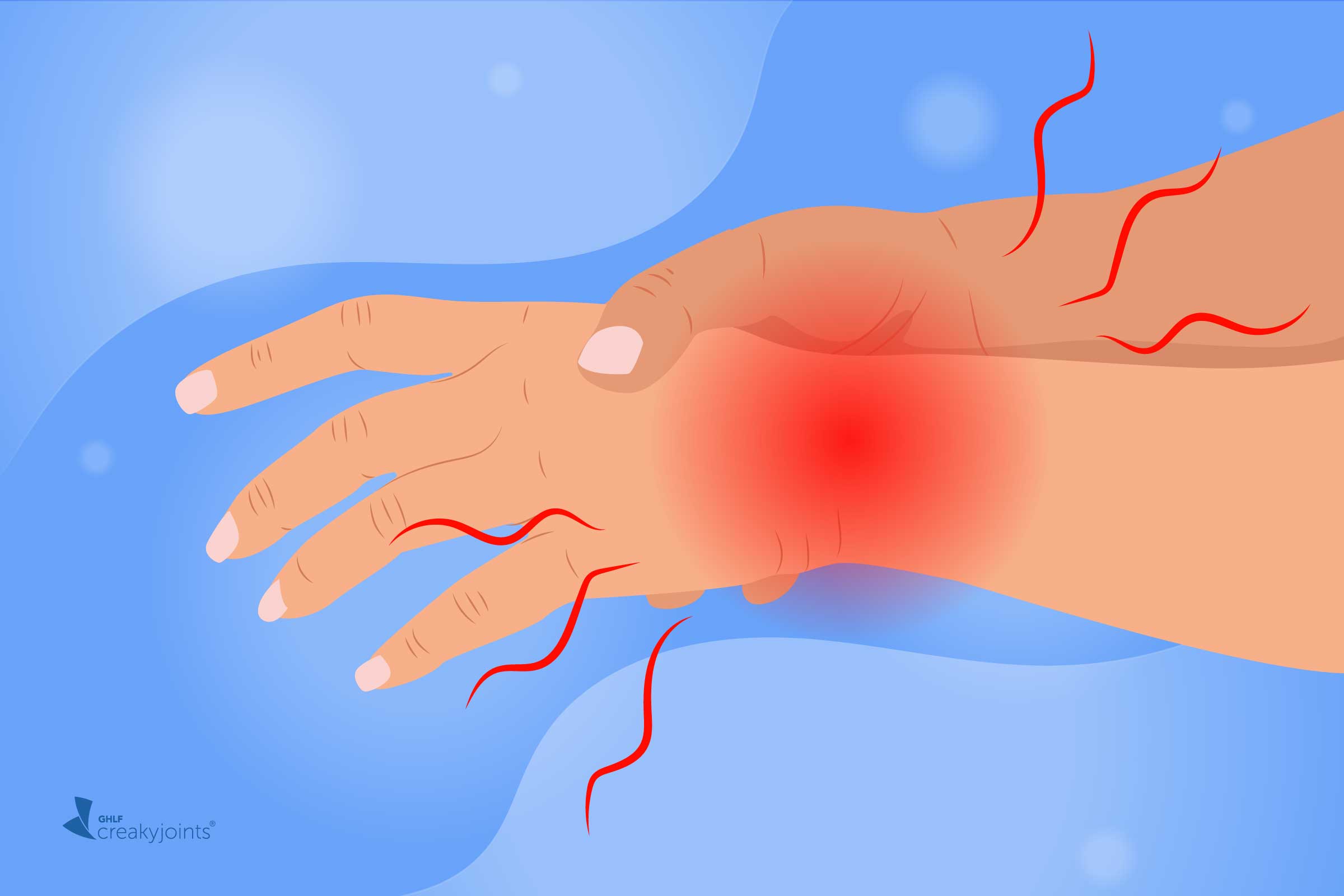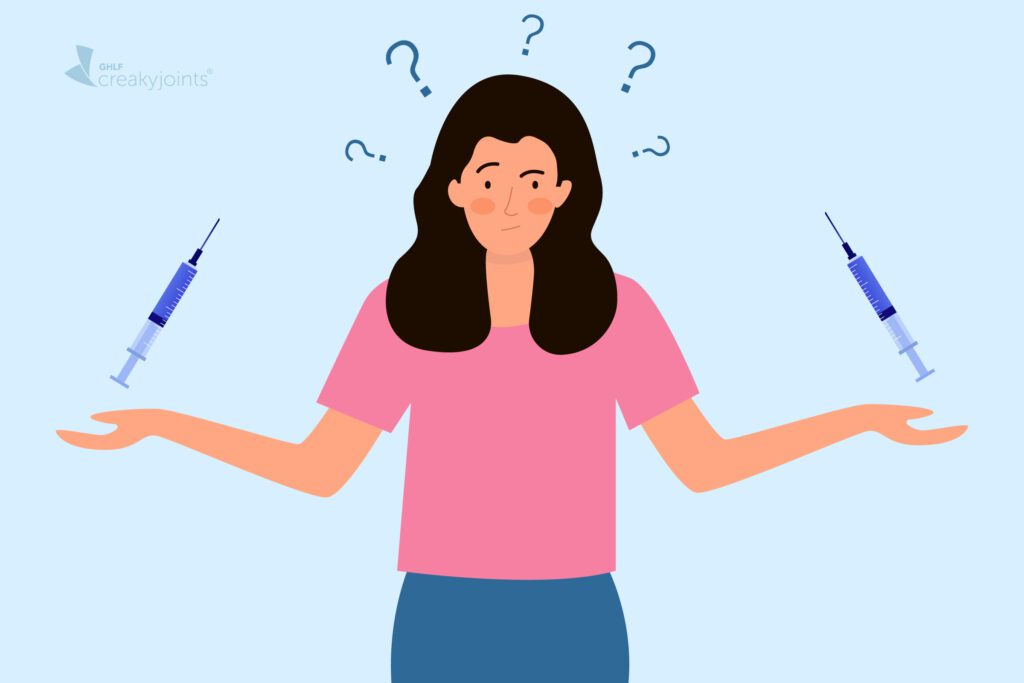Photosensitivity is when exposure to sunlight triggers a reaction from your immune system — usually in the form of a rash. Inflammatory arthritis is a group of diseases that impact the immune system and include rheumatoid arthritis, psoriatic arthritis, ankylosing spondylitis, juvenile idiopathic arthritis, and systemic lupus, among others.
Notice the word they have in common? Yep, the same overactive immune system that attacks your joints — and the medications used to treat these diseases — may make you more sensitive to sunlight. This means that many people with inflammatory arthritis need to take extra precautions when it comes to the sun, especially during summer.
What Causes Photosensitivity in People with Arthritis?
There are two main ways your disease can cause you to react to sunlight, says Stuart Kaplan, MD, a rheumatologist with Rheumatology Consultants, LLP, and chief of rheumatology at South Nassau Communities Hospital in Oceanside, New York.
First: The disease itself may cause it. “Lupus is known for causing photosensitivity. In fact, photosensitivity is one of the criteria used for diagnosing lupus,” Dr. Kaplan explains.
Other kinds of inflammatory arthritis may cause photosensitivity as well, says Erum Ilyas, MD, a dermatologist and founder of Amber Noon, a line of UV-protective clothing. It’s unclear exactly why this happens, but researchers think that your already overactive immune system may see something in your sun-altered skin as “foreign” and go on attack.
Second: Many arthritis medications have sun sensitivity as a known side effect.
Abbie V., 37, of Las Vegas, Nevada, has experienced both types of sun reactions. “It’s actually how I got diagnosed with lupus. Whenever I’d be out in the sun for longer than 10 minutes I would get this bright red rash across my cheeks,” she says. “It was so prominent that people would comment on it all the time, so I finally decided to get it checked out.”
Her doctor said the butterfly rash was a classic symptom of lupus. Once she told him about her other symptoms, including extreme fatigue, muscle pain, swelling in her knees and ankles, and a low-grade fever that came and went randomly, she was quickly diagnosed with the autoimmune disease.
Then her doctor started her on hydroxychloroquine, an immunosuppressive drug used to treat lupus that has photosensitivity as a side effect. “I went to the pool with my kids and an hour later my daughter gasped and said I was turning purple,” Abbie says. Her daughter was not exaggerating. The medication had caused a major reaction that bordered on phototoxicity (more on this below), causing her to have a painful sunburn that was so deep it was purplish in color.
“It felt like I had the flu on top of a fever on top of a sunburn; it really was the worst,” she explains. “It took over a month to fully go away.”
Types and Symptoms of Photosensitivity
Photosensitive reactions can be either “photoallergic” or “phototoxic,” Dr. Ilyas explains. Here’s more about the difference:
What Is a Photoallergy?
“Photoallergic reactions occur when a skin rash develops from the combined effects of something ingested — often a medication, but it could also be a food or vitamin — plus light,” Dr. Ilyas says.
Rashes are itchy and inflamed and generally show up on sun-exposed areas, including the face, neck, hands, and forearms. “Patients often describe them as little sandpaper-like bumps that are exquisitely itchy,” she says. The rash may develop into inflamed patches or papules.
Photoallergic rashes can often be mistaken for contact dermatitis, which is why it’s important to report even lesser rashes to your doctor, she adds. These reactions can take days to develop after sun exposure.
What Is Phototoxicity?
Phototoxicity is similar to a photoallergy in that it occurs as a result of an interaction between a medication or something applied topically (like a lotion or perfume) and the sun’s UV rays — but this reaction is much more serious, Dr. Ilyas says. This is due to a release of energy by the photosensitizing chemicals and can cause long-term damage or even cell death in the skin.
Phototoxic reactions appear within a few hours of sun exposure and look like a really bad sunburn, she says. They are often quite painful. They may sting and burn, blister and peel, cause fever and chills, and cause swelling and fatigue, she says. The rash may progress to appear thick, dark red, or even brown, blue, purple, or grayish, and last for weeks or longer, according to the Skin Cancer Foundation.
Is It Photosensitivity or Something Else?
People with arthritis are no strangers to weird rashes showing up unexpectedly, so how do you know if that red patch is from sun exposure or from something else? It can be tricky, so you have to look for patterns.
A photosensitive rash will appear only on skin exposed to the sun. While more extreme rashes will occur soon after sun exposure, more mild photosensitive reactions can take days to show up.
“For me, it was pretty obvious. Every time I went in the sun it would happen,” Abbie says. “The key for me has been recognizing that it doesn’t necessarily always look like a sunburn. Sometimes I get small, red itchy bumps down my arms. They look different than my face rash but it’s the same reaction.”
Medications That Can Cause Photosensitivity
Two common drug classes that can make your skin more sensitive to sun exposure are:
- Methotrexate
- Certain antibiotics
These drug classes can sometimes cause photosensitivity:
- Certain immunosuppressive drugs, such as azathioprine, cyclosporine, leflunomide, and hydroxychloroquine
- Certain non-steroidal anti-inflammatory drugs (NSAIDs)
- Certain biologic drugs
Any time you’re prescribed a new medication, ask your doctor about potential side effects and how to prepare for them or protect yourself from them.
If you’re not sure whether your medications may cause photosensitivity, call your health care provider and ask.
Is Photosensitivity Dangerous?
Photosensitive reactions fall under the category of annoying and sometimes painful, but they are not usually life-threatening, says Aly Cohen, MD, a rheumatologist at Integrative Rheumatology Associates in Princeton, New Jersey, and founder of The Smart Human.
However, in very rare cases, the sun can trigger a true anaphylactic reaction, which can be fatal if not treated immediately.
“If you feel shortness of breath, chest pain, serious swelling, or trouble breathing along with your rash, get medical attention immediately,” Dr. Cohen says.
How to Protect Yourself from Photosensitivity If You Have Arthritis
“Being proactive and prepared is key to prevent any type of sun reaction,” Dr. Cohen says. For patients with an inflammatory illness, that starts with recognizing that you are at a higher risk for these types of reactions. To be prepared:
Always wear sunscreen, even on cloudy days. Dr. Cohen recommends using mineral sunscreen formulations as they contain fewer chemicals that may react with your skin.
Keep a hat and light jacket handy for when you’ll be outside for long periods. In addition to sunscreen, physically blocking the sun from your skin is very important, Dr. Kaplan says. This means wearing a hat when you’re outdoors and covering your body with clothing with built-in sun protection (look for clothing with a UPF 50+ rating for extra protection).
Never use tanning beds and avoid sunbathing. You may have read online that sunshine on bare skin can help strengthen your immune system and treat skin conditions. While some daily UV exposure can be helpful for people with psoriasis or psoriatic arthritis, formal tanning does more harm than good for everyone, and especially for people prone to sun sensitivity.
Skip chemical-laden body products. Some photosensitive responses can occur with products like perfumes, body wash, makeup, and even sunscreens. Keep your self-care products simple and natural.
Stay out of the sun between 10 AM and 4 PM as much as possible, especially if you are at a higher altitude, as the UV rays are more intense.
How to Treat a Sun Reaction
If you experience any rash from the sun, report it right away to your doctor. They may want to change or stop the medication that could be causing it, Dr. Ilyas says.
“The reaction to my medication was truly scary, I don’t know many times that I’ve felt that awful in my life,” Abbie says. “Thankfully my doctor took it seriously and switched me to another medication. I was prepared to go full hermit and never leave my house in daylight again.”
However, never stop taking a medication without checking with your doctor first.
Most rashes simply require time to go away. If your rash is very itchy or bothersome, talk to your doctor about at-home treatments, such as aloe vera gel, antihistamine creams, oatmeal baths, and cold compresses. Some rashes, particularly phototoxic ones, may need a course of steroids as well, Dr. Ilyas says.






